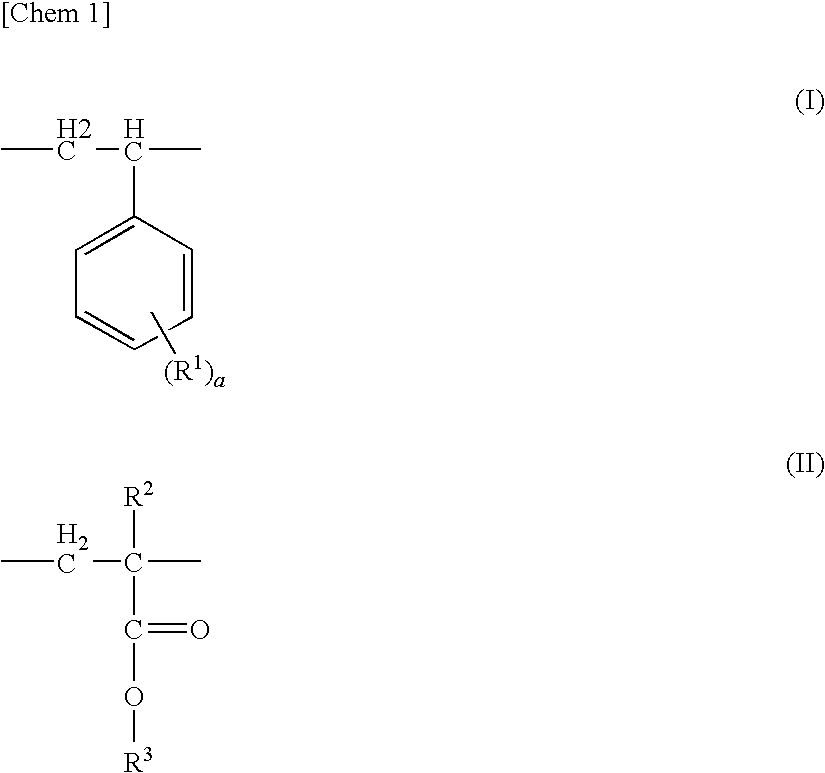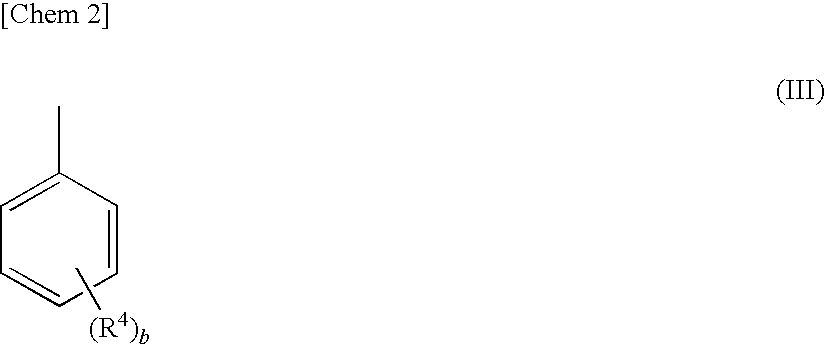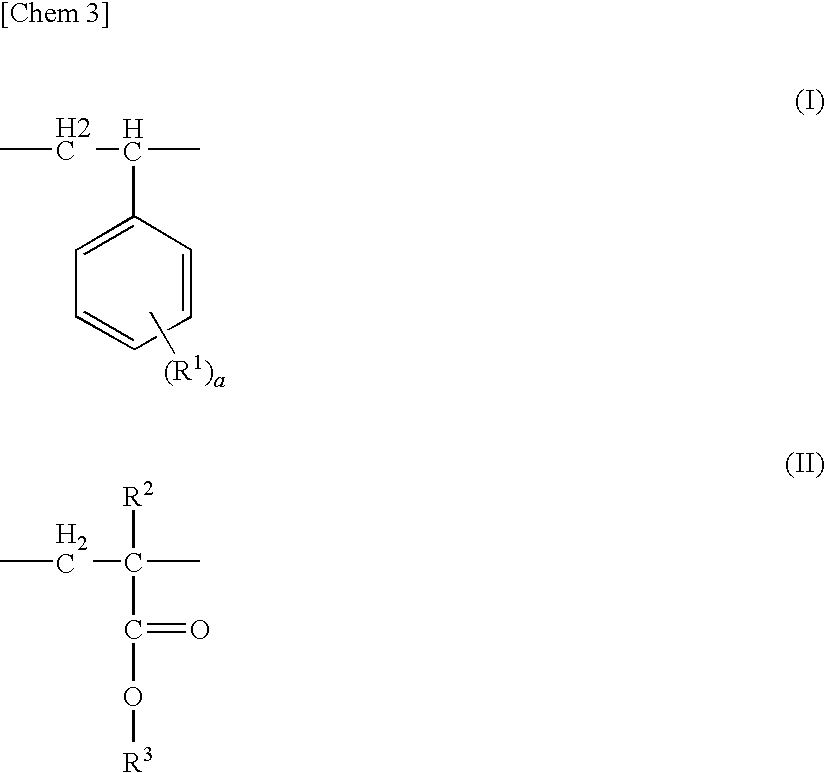Aromatic polycarbonate resin composition, molded body thereof for optical use, and light diffusion film
a technology of aromatic polycarbonate resin and composition, which is applied in the direction of synthetic resin layered products, transportation and packaging, chemistry apparatus and processes, etc., can solve the problems of poor chemical resistance of resin, inability to achieve resin, transparency, and inability to simultaneously satisfy all such sophisticated properties, so as to improve extrusion stability and improve transparency
- Summary
- Abstract
- Description
- Claims
- Application Information
AI Technical Summary
Benefits of technology
Problems solved by technology
Method used
Image
Examples
example 1
[0080]First, 3 parts by mass of a compatibilizer (Comp1) were blended into 100 parts by mass of a resin mixture including 90 mass % of an aromatic polycarbonate resin (PC1) and 10 mass % of a styrene-based resin (SPS1), and then the mixture was kneaded with a vented uniaxial extruder at an extrusion temperature of 290° C. As a result, a resin composition was obtained. The composition was molded with a 25-ramp uniaxial cast molding machine having a die width of 150 mm at an extrusion temperature of 270° C., a discharge rate of 3 kg / hr, a cooling roll temperature of 90° C., and a take-off speed of 5 m / min. As a result, a film having a thickness of 100 μm was obtained. In addition, the resultant film was evaluated for various properties. Table 1 shows the results of the evaluation.
examples 2 to 6 and 10
[0081]Film molding was performed in the same manner as in Example 1 except that the respective raw materials to be blended were blended at ratios shown in Table 1. In addition, the resultant films were each evaluated for various properties. Table 1 shows the results of the evaluation.
example 7
[0082]First, 89 parts by mass of styrene and 11 parts by mass of phenyl ethacrylate as monomers, and 1.2 parts by mass of benzoyl peroxide as an initiator were loaded into a 1,000-cm3 Erlenmeyer flask provided with a three way stopcock, and were then mixed for dissolution. As a result, a monomer liquid was prepared. Then, the air in the flask was replaced with a nitrogen gas for about 1 hour. After that, 2,800 g of pure water were poured into the flask, and the temperature of the mixture was increased to 85° C. so that polymerization might be initiated. The polymerization was performed at 85° C. for 6 hours and at 98° C. for 3 hours. A resin thus obtained was dehydrated and dried. As a result, a styrene / phenyl ethacrylate copolymer was obtained (Comp2). The copolymer had a melt index (MI) of 100 g / 10 minutes (at a load of 2.16 kg and 280° C.). Film molding was performed in the same manner as in Example 1 except that the above Comp2 was used instead of the Comp1 as a compatibilizer. ...
PUM
| Property | Measurement | Unit |
|---|---|---|
| mass % | aaaaa | aaaaa |
| mass % | aaaaa | aaaaa |
| mass % | aaaaa | aaaaa |
Abstract
Description
Claims
Application Information
 Login to View More
Login to View More - R&D
- Intellectual Property
- Life Sciences
- Materials
- Tech Scout
- Unparalleled Data Quality
- Higher Quality Content
- 60% Fewer Hallucinations
Browse by: Latest US Patents, China's latest patents, Technical Efficacy Thesaurus, Application Domain, Technology Topic, Popular Technical Reports.
© 2025 PatSnap. All rights reserved.Legal|Privacy policy|Modern Slavery Act Transparency Statement|Sitemap|About US| Contact US: help@patsnap.com



